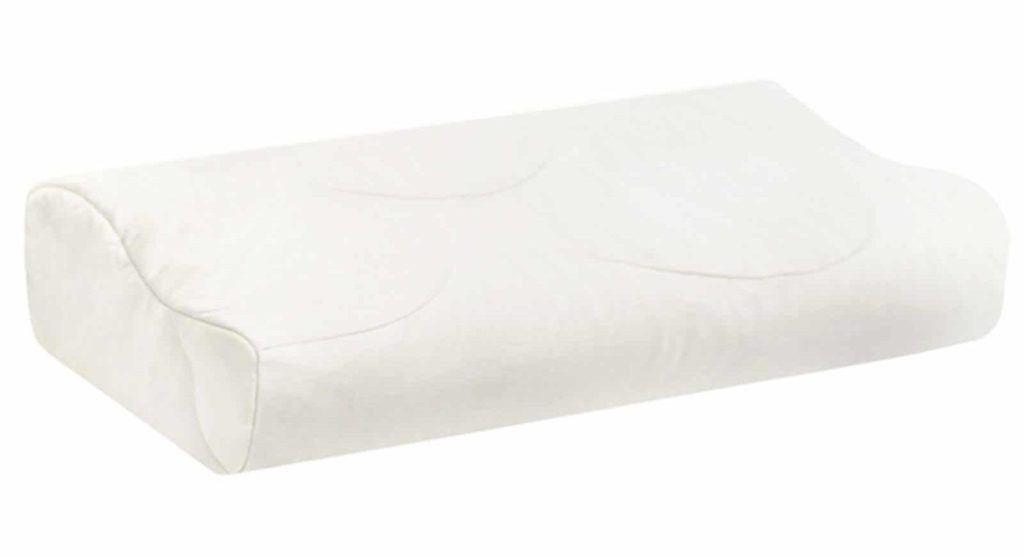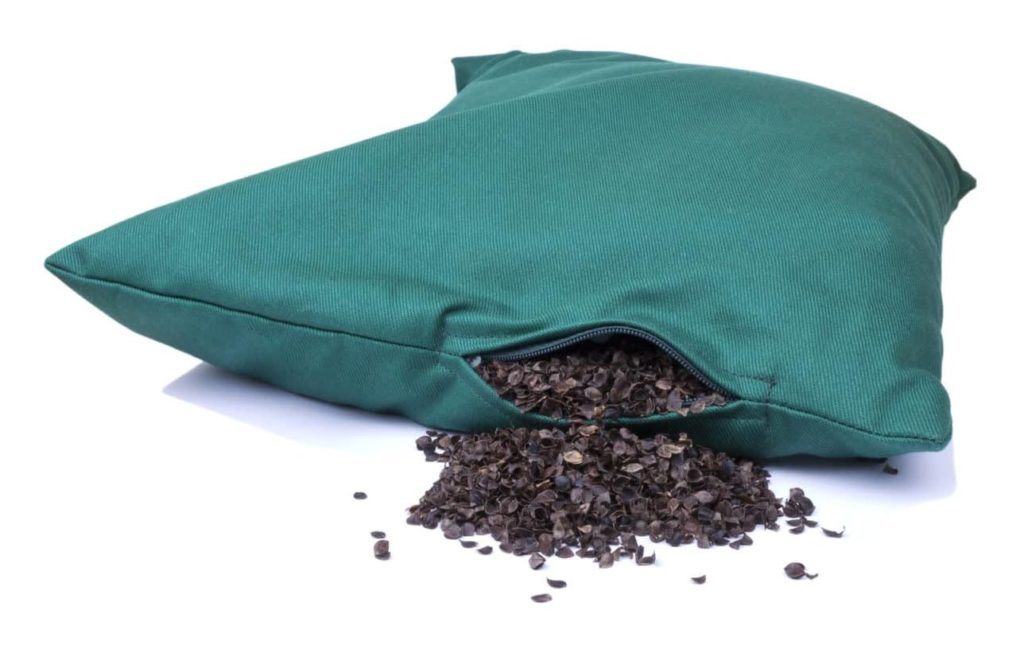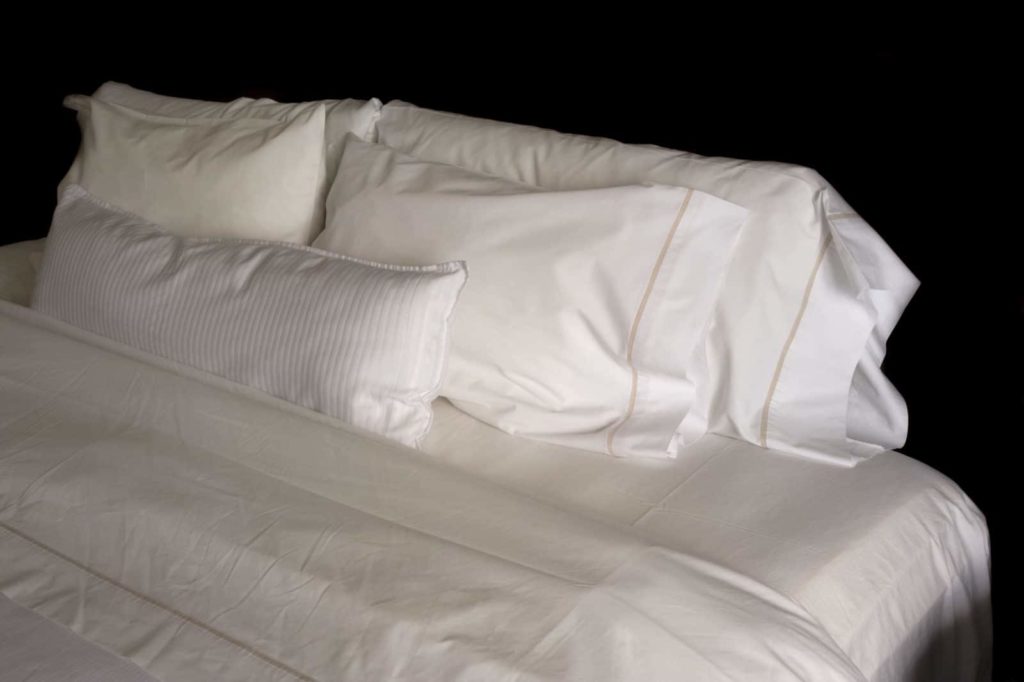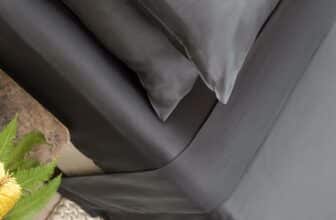Often, when people look to improve or update their bed they start looking for new mattresses when in fact, they may just need a new pillow. Although some people sleep without a pillow, most sleepers prefer using a pillow when they sleep. For them, pillows are a valuable part in facilitating a restful and comfortable night of sleep and their importance should not be overlooked. There are many different types of pillows available today. So many that you may find looking for one overwhelming. But don’t worry! This article examines the different types, the materials used, as well as sizes that make them unique so you make the best decision.
What’s Inside Makes All the Difference
The main variable that makes a pillow different or unique is its filling. Stuffing inside it determines the feel of the pillow overall. It determines its softness or its firmness. It also determines how much it conforms to your head without feeling pain. The material inside the pillow will also provide you with the best neck and head support. And occasionally back and body support, depending on the pillow.
With so much relying on what’s inside your pillow, it’s important to get the one that will support you in the way you specifically need. The following is a list of the most common types of pillow material. It includes their specific traits, their pros, and their cons. Continue reading to figure out what the best choice is for you.
Filling Material in Different Types of Pillows
This is by no means a comprehensive list, but it showcases the most prominent types of pillow material used for filling:
1. Feather Pillows
These are filled with goose feathers and occasionally a mix of down is added to improve overall softness. As a result, these two types of pillows have very similar qualities.

Pros:
Feather pillows are easily fluffed which restores their natural shape. They can be folded and are very malleable which makes them adjustable to your sleep preferences. Feather pillows are light and breathable so they do not overheat throughout the night. Compared to others, they are very affordable and durable. They can also be washed and dried easily.
Cons:
They have been known to emit an unpleasant smell, but this is not common in all types. Occasionally feather quills will poke through the encasement which will need to be pulled out so they do not cause you pain by scratching your face or neck during the night.
2. Down Pillows
These are filled with only the softest of goose and duck feathers. They do not have any quills that will poke you. Down pillows are softer than and more expensive than feather pillows but still considered affordable. They are a very popular choice among consumers.
Pros:
These are breathable and regulate temperature very well throughout the entire night. They are light and combined with their extremely malleable nature, they are best for travel. Dependent on the fill number, they come in a wide variety of firmness options. Those made with a higher fill number equals a firmer pillow; those made with a lower fill number equals a softer pillow. They also fluff easily.
Cons:
They are often hard to clean and have a tendency to clump when exposed to moisture. This makes them less than ideal for sleepers who sweat in their sleep or live in a humid climate. They usually need to be dry-cleaned which can be expensive. Some find that they do not retain their shape overnight with continued pressure and require additional support. Although, this can often be remedied with a down pillow with a higher fill number. Down pillows are not very durable compared to other pillows because of the soft and fragile filling. Some people with allergies may be irritated by the down filling. Lastly, they are not cruelty-free, giving some other reason to avoid them.
3. Synthetic or Down Alternative Pillows
These have much of the same soft feel as a typical down pillow. Synthetic or down-alternative pillows are often filled with polyester or other similar synthetic materials.
Pros:
They are allergy friendly and do not bother people in the same fashion as down. They come in a wide variety of firmness and softness options so they can suit most people’s preferences. Synthetic pillows are breathable, light, and do not retain a lot of heat. They retain their shape for a good amount of time and do not require fluffing after use.
Cons:
Synthetic pillows are not as malleable as a traditional down or feather pillow. Also, many do not experience the same level of comfort or softness that they do from an authentic down pillow.
4. Memory Foam Pillows
They are very popular among consumers today. NASA invented memory foam to absorb shock in aircraft seat cushions but since then, it has been used in many different products, such as pillows. They respond to heat and mold to your heads shape as you apply pressure. After use, it returns to its original shape so you are not restricted to using only one place on the pillow.

Pros:
Memory foam pillows conform to the shape of your head providing superior support and elevated comfort with no pain. They are continuously self-adjusting and shift with the movement of your head as you change your position when you sleep from the side, to the back or on your stomach. Memory foam pillows provide a firm yet soft sensation that cradles the nack and head. Many sleepers, particularly those who sleep in all positions, prefer it for this reason. They are also extremely durable and will last much longer than a traditional pillow. These are specifically aimed at alleviating head, neck and back pain.
Cons:
Memory foam is heavy, making it less convenient to transport. It also emits a smell when first unpackaged. The off-gassing process should only last a couple days if you air it out but some find it unpleasant. Memory foam density also means that it retains heat. This heat retention allows it to maintain its molding shape but can be too hot for some sleepers. Lastly, memory foam is less affordable than many other pillow options.
5. Shredded Memory Foam Pillows
These are very similar to solid, single piece memory foam pillows but with a couple significant differences. As the name suggests, the memory foam is shredded before being put in an encasement. This allows shredded memory foam to be softer and more moldable to the nack and head, similar to a feather or down pillow, without sacrificing durability.
Pros:
They are more breathable than a solid piece of memory foam so they do not retain heat in the same way. This added ventilation is a major plus for the memory foam. For people who prefer a softer pillow, this is also a better option. Just make sure to fluff it regularly. Many options on the market today are adjustable as well. It allows you to add or take out shredded filling as needed to suit your particular head and neck height.
Cons:
Shredded memory foam does not cradle your head in the same way, this could be a positive or a negative trait depending on your personal preferences. They are also slightly less durable than a solid piece of memory foam so it will need to be replaced more often.
6. Innerspring Pillows
These pillows, like innerspring mattresses, have a core comprised of steel springs or coils. They are responsive to pressure and are ergonomically designed to provide a superior level of comfort. Often, they are shaped specifically to give your neck added support. Most have a layer of memory foam or another form of foam on the top layer that your face comes in contact with.
Pros:
They facilitate excellent airflow allowing you to sleep cool all night. Their advanced responsiveness also conforms, making it supportive for stomach sleepers, back sleepers, or side sleepers.
Cons:
The main drawback to an innerspring pillow is the price. They are very expensive compared to other pillow options. However, some believe it is well worth the extra cost. Over time, they may begin to make noise which could disturb light sleepers.
7. Gel Pillows
This is often used in combination with latex or foam to create an extra layer of comfort. Gel beads bond with the foam to provide a smooth and soothing surface. Different gel pillows have different percentages of gel used in their construction. It is generally recommended that you purchase one with approximately 30% gel to best maximize your comfort.
Pros:
Compared to other solid foam pillows, they are exceptionally cool. They promote airflow while regulating the pillow’s temperature. Gel pillows maintain their shape and are supportive, making them the best option for any type of sleeper.
Cons:
They are not as durable as full foam pillows because the added substance contributes to the deterioration of the foam. However, many overlook this because of their advanced cooling properties. Also, they are fairly expensive. Each material slightly adds to the cost. Since gel pillows are a mixture of several materials, the cost reflects this.
8. Latex Pillows
They are a type of foam that can be naturally harvested from rubber trees or made synthetically. Many are comprised of a mixture of both types.
Pros:
They are much softer and provide better pressure point relief than memory foam pillows while still being considered a firm pillow option. Latex foam is much more breathable than memory foam so it does not retain heat. Most find they sleep cool throughout the night. They are durable, easy to clean, and will last you a long time if cared for. Also, they are hypoallergenic and resistant to dust mites.
Cons:
They are heavy, even heavier than memory foam, making them hard to travel with. The most significant con is the price. They are some of the most expensive pillows available. But, if the price is not a determining factor for you, they offer luxurious quality that is worth the price.
9. Buckwheat Pillows
These have been common in Asia for centuries but have only recently begun to gain popularity in the United States of America. The pillows are filled with the hard outer shells or hulls of buckwheat. They have the same look and feel of a beanbag.

Pros:
Buckwheat pillows are suitable for most types of sleepers due to their malleability. They offer support in any sleeping position: back, side or stomach. Although, there may be some minor adjustments that need to be made. Buckwheat pillows can be smoothed out or fluffed depending on the firmness you prefer. Either way, they promote healthy neck and spine alignment. They are all-natural and plant-based, making them a sustainable, environmentally friendly option. Another advantage is its breathability. They do not retain heat overnight ensuring you sleep cooler than with other materials.
Cons:
Unfortunately, the hulls do tend to break down over time resulting in less support overall. However, all pillows need replacing at some point so do not be discouraged by this alone. Some light sleepers do not like this type of pillow due to the soft rustling noise it produces when you shift positions. These are also very heavy and depending on the size, can weigh as much as ten pounds. They can be difficult to clean and also can take a long time to dry. If not ventilated properly while drying, they may even develop an unpleasant musty smell. Lastly, they may be too firm if you prefer a soft pillow.
10. Polyfill or Poly-Cluster Pillows
These use a combination of polyester textures to make the filling. Polyester is man-made, easy to produce, and has been popular since the 1950s. These are fluffy and bounce back to their original shape if folded or fluffed. They are sometimes referred to as microfiber pillows.
Pros:
Polyfill pillows are very easy to clean. They can be machine washed and machine dried right in your home. People with allergies occasionally prefer these because they are hypoallergenic when produced. It is equally as soft as cotton and makes an extremely affordable pillow option for sleepers who value softness. Polyfill pillows are available in a variety of firmness so they can be suitable for people who sleep in any position.
Cons:
Unfortunately, polyfill does not breathe very well causing them to retain excessive heat overnight. Polyfill pillows are not very durable either. They will flatten out quickly and often begin to get clumpy after only a short period of use causing them to lose a lot of their support. They are not resistant to dust mites so while they may start as hypoallergenic products, they do not always end that way. Lastly, the production of polyfill utilizes harsh chemicals and toxins so it is harmful to the environment.
11. Specialty Pillows
There are lots of different specialty pillows available on the market today that cater to highly specific sleep needs. Here are just a few examples:

- Adjustable pillows can be made suitable for different people with varying needs. They can be adjusted repeatedly without losing their integrity.
- Sleep apnea/snoring pillows best promote a head and body position that deters sleep apnea or snoring which enables you to get more restful sleep.
- Neck pillows give your neck and head added support right where you need it. Neck pillows are often used for traveling.
- Maternity pillows help women later in their pregnancy find comfort when their bellies are protruding. They promote sleeping on your side.
- Lumbar pillows are best placed below your lower back and provide extra support for people who may experience discomfort or pain in their lower backs.
- Wedge, bolster, or roll pillows can be used in any part of your body you find need the most comfort. With side sleepers, they are frequently placed between the knees to reduce strain on the lower back.
Pillow Sizes
There are many different types of pillow shapes, rectangle being the most common. These come in many different sizes. Aside from the filling, the size of your pillow is one of the most prominent variables that can affect your sleep overall.

Here is a list of the most commonly seen sizes of pillows:
1. Standard-sized: 20” x 26”
Two standard-sized pillows fit comfortably across the top of a full mattress
2. Super standard-sized: 20” x 28”
One super standard pillow fits well across the top of a single or twin mattress. They are also good for people who like to roll over throughout the night and require a bit more length.
3. King: 20” x 36”
Two king pillows easily fit across the top of a king mattress.
4. Queen: 20” x 30”
Two queen-sized pillows comfortably fit across the top of a queen mattress.
5. Body pillows: 54” in length
Intended to be curved and hugged so it fits the body.
6. Toddler-sized: 13” x 18”
A toddler-sized pillow is designed to be easily transportable and to fit in the little hands of children.
7. Travel Pillows: Varying Shapes and Sizes
They are often made with lightweight, synthetic microbeads. They provide the look and feel of a beanbag.
8. European-sized: 26” x 26”
European-sized pillows are often used as a secondary pillow or decorative pillow.
Pillow Features to Look For
When it comes time for you to buy a new pillow, or pillows, remember to look for the traits you value most so you can achieve a personalized level of comfort.
Here are some popular traits people base their pillow selection decision upon. Hopefully, these may best benefit you as well:
- Improved neck support
- Improved back support
- Snoring and sleep apnea prevention
- Extra soft
- Cooling sensation
- Cradling sensation
- Conforming to face’s shape/malleability depending on your preference
- Allergy reduction
Now You are Ready!
This article explored the different types of pillow material and sizes so you can easily navigate the marketplace and purchase the best pillow for your individual and specific sleep needs. With all the types of pillows available, it can often be difficult to understand your options. Hopefully, this helps you. Everyone is different and it may take some trial and error but the best pillow for you is available. Have fun finding the perfect one!
Additional Resources
- Different Types Of Mattresses
- Foam vs Spring Mattress
- What Is A Platform Bed?
- The Best Mattress For Heavy People






